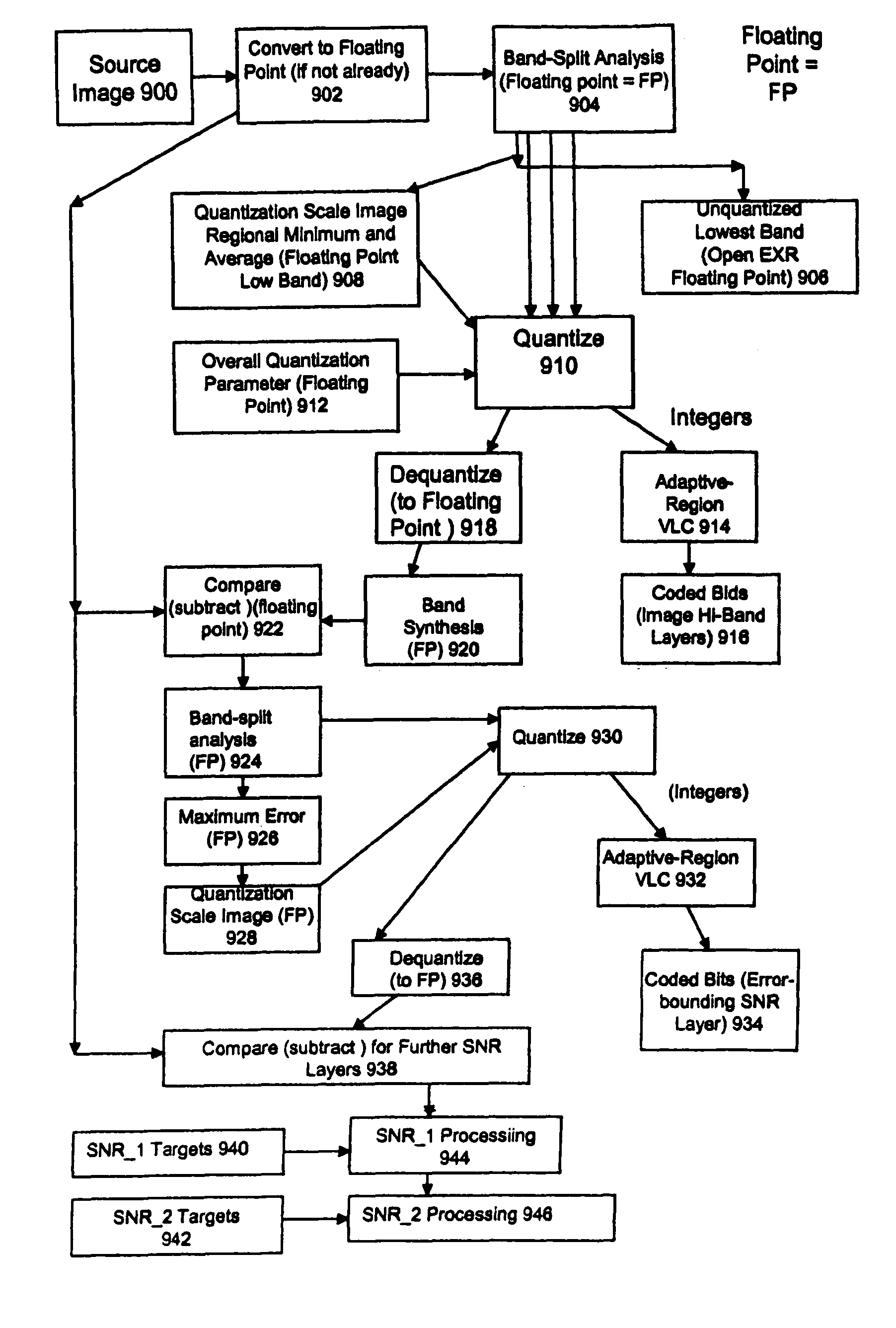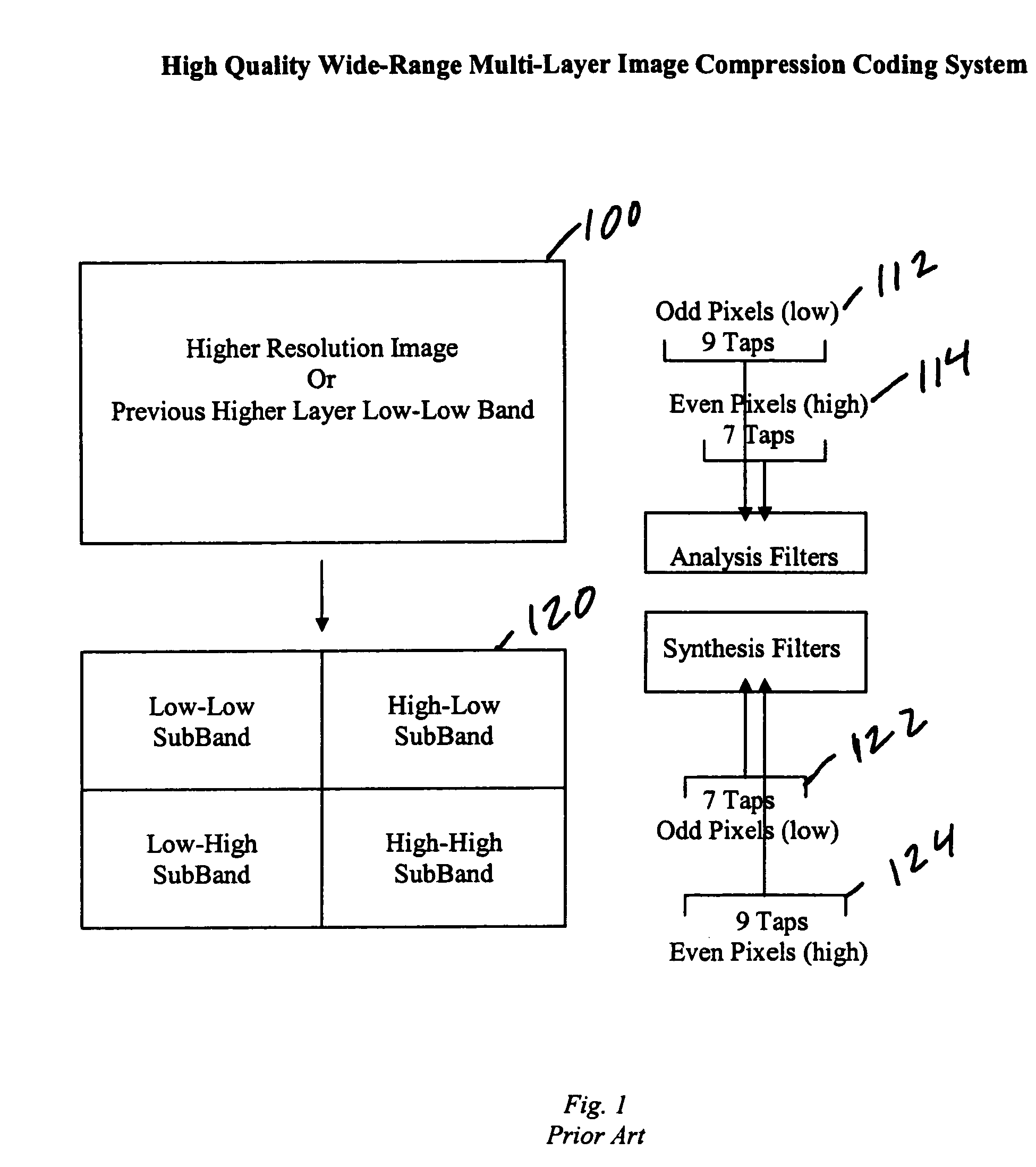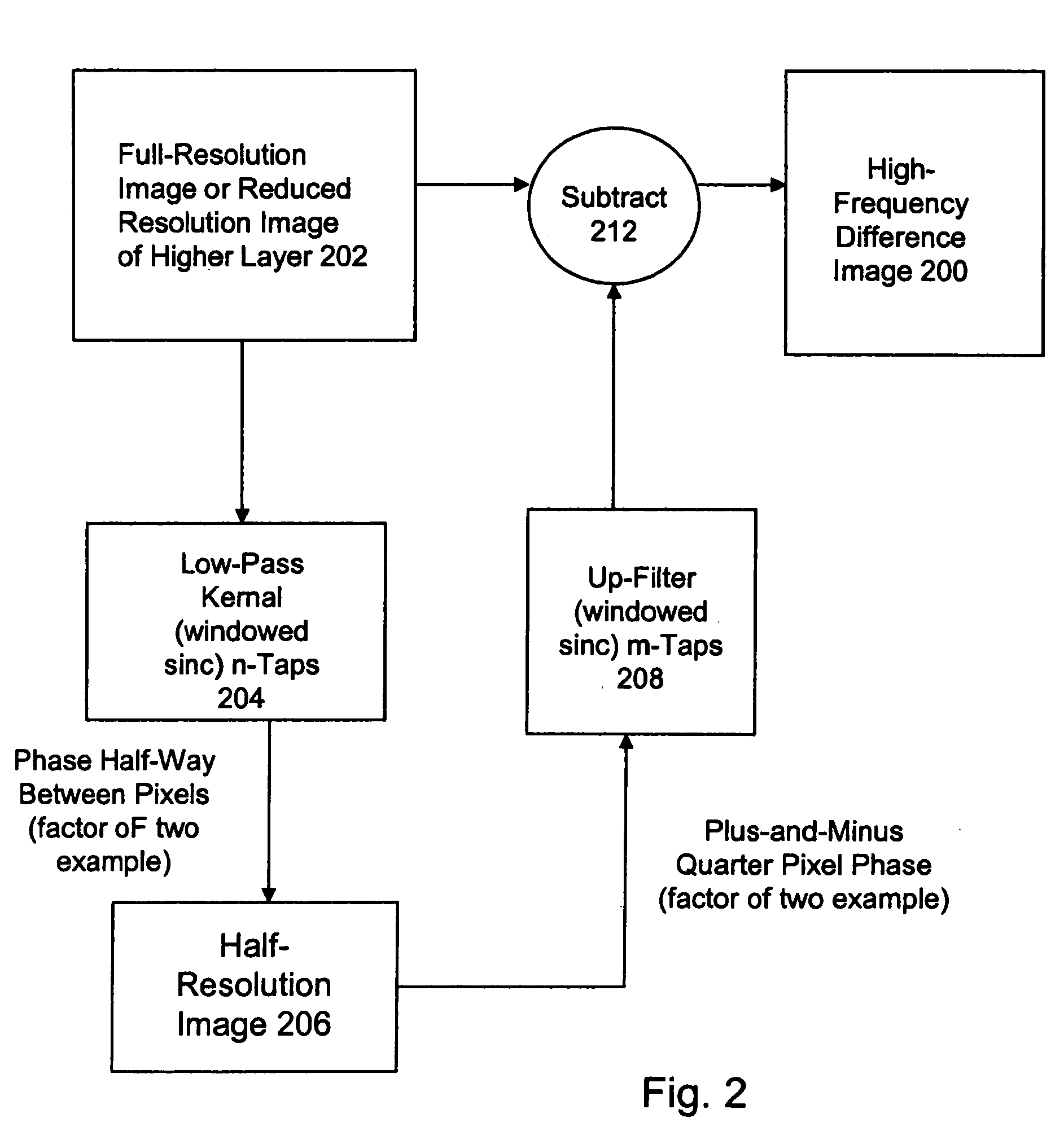High quality wide-range multi-layer image compression coding system
a multi-layer image and compression technology, applied in the field of compression of images, can solve the problems of unsatisfactory truncated sinc, relatively random additional errors, and the inability of jpeg-2000 to offer motion compensation, and achieve the effects of less noise, less accuracy, and less accuracy
- Summary
- Abstract
- Description
- Claims
- Application Information
AI Technical Summary
Benefits of technology
Problems solved by technology
Method used
Image
Examples
Embodiment Construction
[0083]Ubiquitous Floating Point
[0084]As image compression processing becomes more complex, as it does with the many-layered DWT 9 / 7 subband transform, the number of concatenated computational steps increase substantially, and may be on the order of thousands of processing steps. The common practice of mixing integer and floating point processing becomes problematic because the quantization errors from a sequence of computation steps can accumulate to significant errors. One aspect of the present invention is the consistent ubiquitous use of 32-bit floating point for pixel and transformed pixel values in all computations, except for initial RGB (red-green-blue channels) image file input and at the quantization step itself. In the preferred embodiment, the image input options include 32-bit floating point (e.g., “Tiff”, “DPX”, or “OpenExr” file formats), 16-bit “half” floating-point OpenExr, 16-bit integer Tiff, and 10-bit DPX (for compatibility) file formats. In the preferred embodim...
PUM
 Login to View More
Login to View More Abstract
Description
Claims
Application Information
 Login to View More
Login to View More - R&D
- Intellectual Property
- Life Sciences
- Materials
- Tech Scout
- Unparalleled Data Quality
- Higher Quality Content
- 60% Fewer Hallucinations
Browse by: Latest US Patents, China's latest patents, Technical Efficacy Thesaurus, Application Domain, Technology Topic, Popular Technical Reports.
© 2025 PatSnap. All rights reserved.Legal|Privacy policy|Modern Slavery Act Transparency Statement|Sitemap|About US| Contact US: help@patsnap.com



